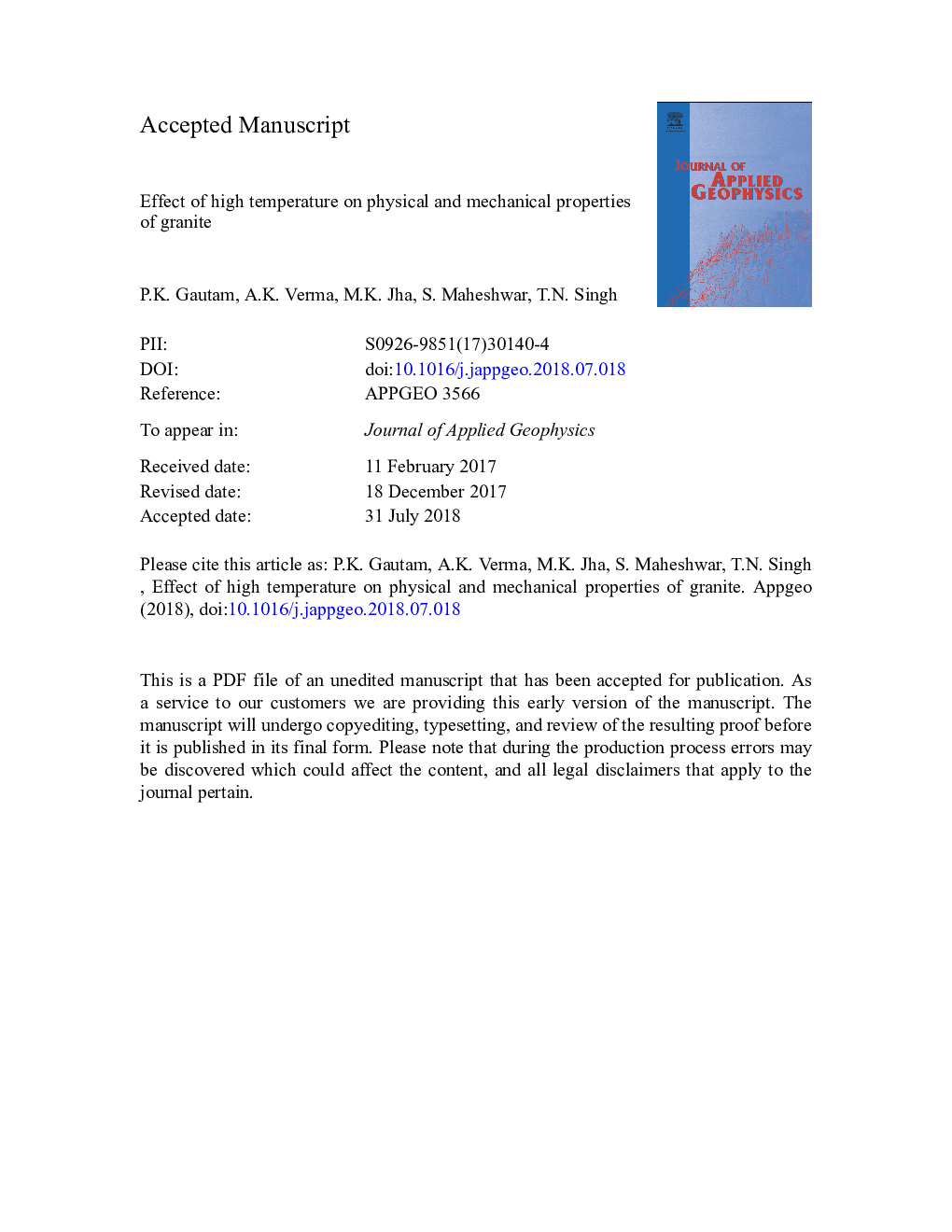| Article ID | Journal | Published Year | Pages | File Type |
|---|---|---|---|---|
| 11033052 | Journal of Applied Geophysics | 2018 | 58 Pages |
Abstract
In this study, an experiment was carried out to study the thermal effect (from 25â¯Â°C to 600â¯Â°C) on stress-strain behavior, elastic modulus, peak stress, thermal damage, and tensile strength of Jalore granite, India and compared with similar properties of granite from other countries. Scanning electron microscope (SEM) analyses have been done to determine the changes in growth of thermal cracks due to heating of Jalore granite at different elevated temperature. Based on the temperature interval (between 25â¯Â°C and 600â¯Â°C) can be divided into two zones from 25â¯Â°C-300â¯Â°C to 300â¯Â°C-600â¯Â°C. It was observed that the compressive strength and tensile strength of rock increased as the temperature was gradually increased up to 300â¯Â°C, but decreased sharply above this temperature. In the temperature range of 300â¯Â°C-600â¯Â°C, stress-strain curves showed plasticity behavior in which brittle-ductile transition was observed. It was observed that thermally-inducedmicro-cracks because of its complexity in thermal expansivity, the densification stage is longer which increases the crack density rapidly, at the same time, the elastic modulus, compressive strength, and thermal damage are higher. Heating at high temperature will make the tensile strength of granite change due to the loss of water and minerals and the effect of thermal stress that the most conspicuous effect is the expansion of quartz.It is found that 300â¯Â°C is the critical temperature for Jalore granite above which the physicomechanical behavior reduces sharply. A very strong correlation was found between the compressive strength and tensile strength of Jalore granite rock with very high coefficients of determination.
Related Topics
Physical Sciences and Engineering
Earth and Planetary Sciences
Geophysics
Authors
P.K. Gautam, A.K. Verma, M.K. Jha, Pushpendra Sharma, T.N. Singh,
